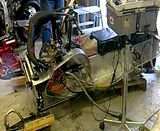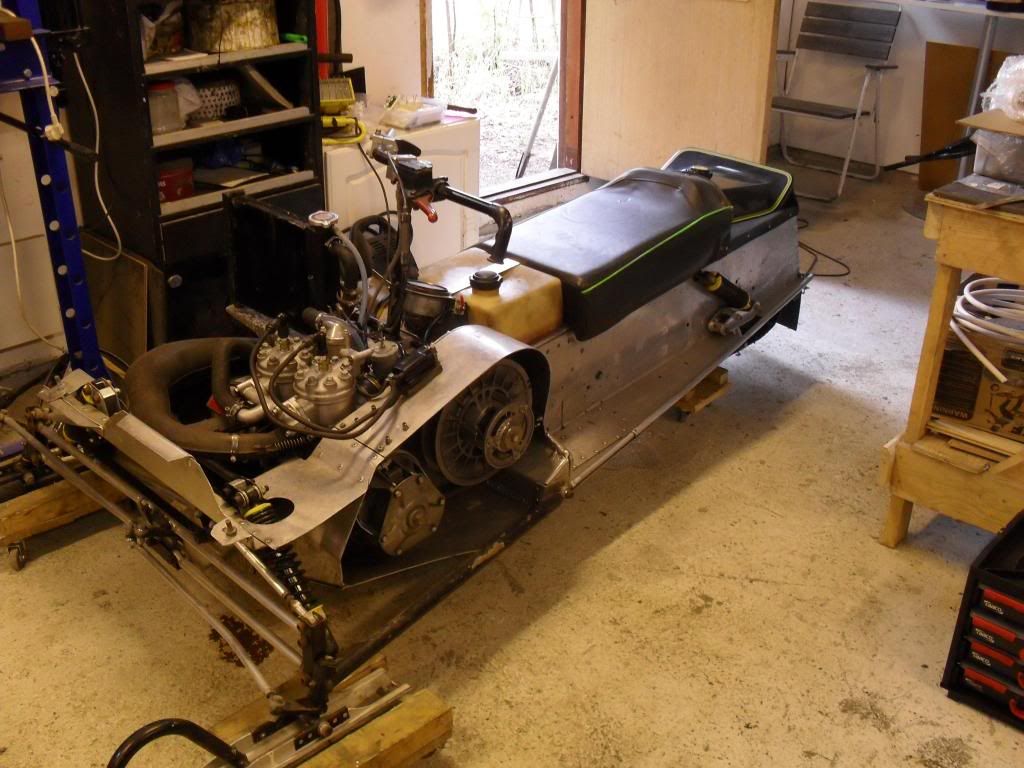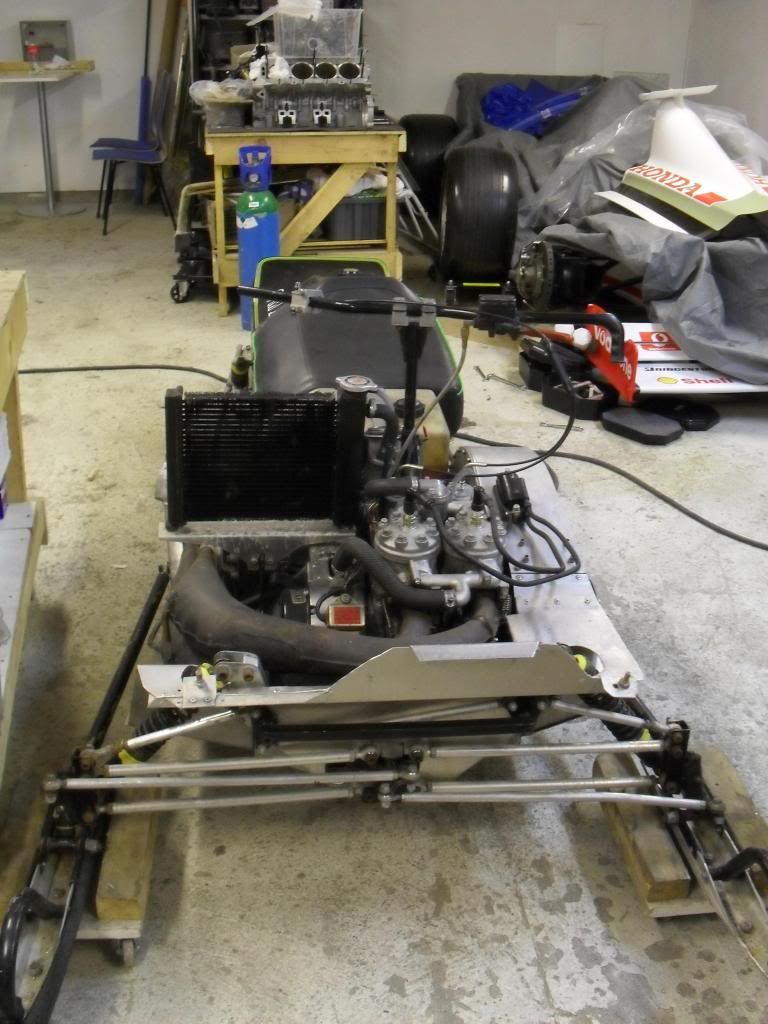Nowhereman wrote:For F1 applications, a 2 stroke derrivative would dominate in the HP / weight catagory.
2 strokes can be much lighter than 4 stroke designs.
I also believe that do to the common pratice of the engine being a stressed member of the chassis, a 2 stroke design could be developed to promote better chassis stiffening than it's 4 stroke counterpart.
The F1 should allow 2 stroke designs to compete with 4 stroke designs if F1 is truly the pinnacle of motorsport.
The problem with F1rules is that they are under pressure from the participants to keep costs down and thus many things like CG height, camshaft location, B/S ratio, materials etc. are all prescribed. And the biggest limit on engineering development is the Std. ECU. All these things and more conspire against F1 truly being the pinnacle of Motorsports. Remember, there was a time around 1985-89 or so, when F1 had V8s (Cosworth), V12s (Ferrari), turbo inline 4s (BMW) and turbo V6s (TAG Porsche) all racing on the track at the same time. Honda had a V10 back then and raced a V12 the very next season.
Right now I would say that LMP1 cars allow the most engineering freedom. Plus the LeMans series rules makers are approachable and open to entertaining thinking outside the box. So along comes Audi and they say: "We want to explore diesel technology." and the rules makers said: "OK, have a go at it." The rest, as they say, is history.
Yes the direct injection two-stroke technology deserves exploration. For years engineering journals have spoken of the direct injection technology being developed by Orbital. Now consumers can buy outboard motors featuring it. Along with these high-tech clean two-strokes in the outboard motor market, ultra high-tech 4 strokes are being developed with incredible reliability and needing almost zero service/maintenance.
As to the benefits of two-strokes over four-strokes...
The main benefit of a 4S is that the power stroke goes all the way to BDC, better scavenging/pumping, easier lubrication. The draw backs are half as many power strokes per revolution and an inefficient power consuming valve train that is heavy and complex. Inefficiencies also arise from having a bunch of reciprocating mass. Comparative size and weight between a 2S and a 4S greatly favor the 2S.
The main benefit of a 2S are almost zero losses caused by valve opening and closing and 2S motors have twice as many power strokes per revolution, combustion chamber design and shape is virtually unlimited. Smaller size, greater simplicity, less weight all are huge benefits enjoyed by 2S. The draw backs are a shorter power stroke, lubrication challenges, emission challenges, exhaust pipe size and routing issues and a inferior scavenging/pumping effectiveness.
High-tech direct injection 2S motors pretty much have overcome the lubrication issues and the emissions issues. We must note that the overall scavenging/pumping effectiveness only needs to approach 50% relative to that of a 4S since the power strokes are twice as frequent before the trade-off reaches parity. These engines definitely have a bright future ahead of them in automotive applications and I wouldn't be surprised to see them appear in LeMans type racing in the next five years.
There have been many attempts at novel solutions to the 4S valve train issue. One of the most promising designs is the Bishop Valve system.
http://home.people.net.au/~mrbdesign/PD ... echBRV.pdf Great performance numbers and efficiency have already been achieved on bench models as detailed in the article.
There are two different designs exploring the same basic principle. One design has two "tubes" per cylinder and the other utilizes just one "tube". The one tube design allows for huge valve area but suffers from poor spark plug location and the best solutions involve two synchronized spark plugs which present challenges. The two tube design has less valve area but an ideal spark plug location. I know it is only a matter of time before the BRV engine sees mass production. The benefits are just too many. lighter, simpler, smaller, far lower valve train losses that involve no reciprocating mass.
This has been discussed on this forum here
viewtopic.php?f=4&t=7486&start=0 BTW, integrating the head and cylinder into one piece solves the "head bolt issue" raised by a forum member.
F1 could have been the vehicle that brought the BRV engine to notoriety but politics, Max Mosley and fear killed it. Now another series will introduce it to the masses and F1 will been seen as "high-tech" as push-rod carbureted NASCAR dinosaurs. Too bad. The .pdf article ends with this sad commentary...
With advantages in height, weight, C of G, elimination of inertia loads, breathing and greater durability Bishop is confident that, had the technology not been banned, it would have become the technology of choice for racing engines.
This technology has considerable potential in production applications where it has the additional advantages of fast combustion, low valve drive torque and high compression ratio capability. Bishop anticipated that demonstration in F1 would provide the impetus for the considerable further development required to bring this technology to production. Regrettably F1 has abandoned its long standing raison d’être to “improve the breed” and replaced it with “protection of the status quo”.
Innovation over refinement is the prefered path to performance. -- Get rid of the dopey regs in F1









